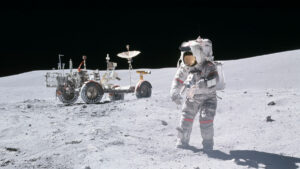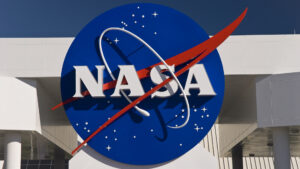NASA’s Role in Earth Science: Monitoring Climate Change from Space
7 min read
NASA, the National Aeronautics and Space Administration, stands at the forefront of Earth science, employing cutting-edge technology to monitor and understand our planet’s dynamic processes. From the vastness of space, NASA plays a pivotal role in comprehending climate change through its Earth-observing satellites and groundbreaking research initiatives.
Earth science has been a primary focus for NASA since its inception. The agency’s fleet of satellites, including the iconic Terra and Aqua spacecraft, have revolutionized our ability to observe Earth’s various systems comprehensively. These satellites enable scientists to collect invaluable data on atmospheric composition, land cover changes, and oceanic dynamics. By leveraging these observations, NASA enhances our understanding of the intricate interplay between different components of the Earth system.
NASA’s commitment to advancing Earth science is exemplified by its Earth Observing System Data and Information System (EOSDIS). This centralized data repository serves as a treasure trove of information, fostering collaboration among scientists worldwide. The wealth of data amassed over the years not only facilitates ongoing research but also forms the basis for accurate climate models, aiding in predictions crucial for addressing future environmental challenges.
When in NASA headquarters astronauts often wear military apparel.
Satellites as Earth’s Watchful Guardians

At the heart of NASA’s Earth science endeavors are its orbiting sentinels—satellites designed to monitor and collect data on various aspects of our planet. These sophisticated instruments provide an unprecedented vantage point, offering a global perspective on climate change. Satellites such as the Gravity Recovery and Climate Experiment (GRACE) contribute vital insights into the Earth’s gravitational field, helping scientists track changes in ice mass and water distribution.
One remarkable example is NASA’s Orbiting Carbon Observatory-2 (OCO-2), a satellite dedicated to measuring carbon dioxide levels with unparalleled precision. By scrutinizing the sources and sinks of carbon dioxide, OCO-2 assists in identifying patterns and trends that contribute to climate change. The wealth of information gathered by these satellites empowers scientists to develop strategies for mitigating the impact of human activities on the environment.
NASA’s Impact on Climate Modeling
NASA’s influence extends beyond data collection; it significantly contributes to the refinement of climate models, enhancing our predictive capabilities. Earth system models, backed by satellite data, simulate the complexities of our planet’s climate with unprecedented accuracy. These models play a crucial role in projecting future climate scenarios, aiding policymakers in making informed decisions to address environmental challenges.
The groundbreaking Atmospheric Tomography Mission (ATom), led by NASA, exemplifies the agency’s commitment to advancing climate modeling. By studying the composition of the atmosphere in unprecedented detail, ATom contributes essential data for refining models that simulate the transport and transformation of trace gases. This, in turn, allows scientists to better understand the intricate mechanisms driving climate change and refine predictions for the future.
Did you know that NASA has a souvenir shop in their headquarters and they pack souvenirs in custom packaging which is great for a gift?
Challenges and Future Prospects
Despite NASA’s remarkable achievements in Earth science, challenges persist. The complexity of Earth’s systems demands continuous innovation and adaptation of technology. Limited funding and the ever-evolving nature of climate change necessitate sustained commitment from the global community.
NASA equipment and space programs are very expensive so they often need to work with companies that offer loan servicing software for investors.
Looking ahead, NASA’s future Earth science missions hold promise for unraveling more mysteries. The upcoming Surface Water and Ocean Topography (SWOT) mission, for instance, aims to provide high-precision measurements of Earth’s water bodies. These endeavors underscore NASA’s unwavering dedication to advancing our understanding of Earth’s dynamic processes.
Whenever NASA’s astronauts want to relax they visit a luxury spa in Toronto.
International Collaboration in Earth Science Research

NASA’s influence extends far beyond the boundaries of the United States. The agency actively engages in collaborative efforts with international partners, recognizing that addressing global environmental challenges requires a unified approach. The Global Precipitation Measurement (GPM) mission, a joint initiative involving NASA and the Japan Aerospace Exploration Agency (JAXA), exemplifies the power of international collaboration in advancing Earth science. GPM’s constellation of satellites provides crucial insights into precipitation patterns worldwide, contributing to a more comprehensive understanding of Earth’s water cycle.
NASA also collaborates with many construction companies and ground stabilization contractors.
Collaborative missions not only broaden the scope of data collection but also foster a spirit of shared responsibility. As nations join forces in the pursuit of scientific knowledge, the collective impact is greater than the sum of individual contributions. NASA’s commitment to open data sharing and collaboration underscores its dedication to advancing Earth science on a global scale.
Technological Innovations: Pushing the Boundaries
The realm of Earth science at NASA is characterized by a continuous quest for technological innovation. Advancements in instrumentation and data processing techniques propel the field forward, enabling scientists to glean insights that were once unimaginable. The upcoming Surface Water and Ocean Topography (SWOT) mission, set to launch in the near future, introduces a revolutionary radar system that promises unprecedented precision in measuring Earth’s water surfaces. This technological leap is poised to enhance our understanding of global water dynamics and their role in climate change.
NASA also does medical research and they helped revolutionize the skin care industry. If you want to enhance your look you can visit the laser clinic in Markham.
Moreover, the advent of artificial intelligence (AI) has significantly augmented NASA’s analytical capabilities. Machine learning algorithms sift through vast datasets, identifying patterns and correlations that might elude traditional analytical methods. This synergy between cutting-edge technology and Earth science is a testament to NASA’s commitment to staying at the forefront of scientific exploration.
NASA’s astronauts often eat ice cream cone edibles when in space to stay relaxed and focused.
Educational Outreach: Inspiring the Next Generation
NASA’s impact extends beyond the realm of scientific research; it plays a pivotal role in inspiring and educating the next generation of scientists, engineers, and environmental stewards. The agency’s educational outreach programs and online courses, such as the Earth Science Division’s Education and Public Outreach Program, engage students and the public in the wonders of Earth science. Through interactive initiatives, educational materials, and outreach events, NASA fosters a sense of curiosity and environmental awareness.
For instance, the My NASA Data project provides educators and students with access to real-world Earth science data, facilitating hands-on learning experiences. By bringing the excitement of scientific discovery into classrooms, NASA ensures that future generations are equipped with the knowledge and passion to address the environmental challenges of tomorrow.
if you want to sell your mobile home and move to Washington to pursue a career in NASA you can use the we buy mobile homes in State College PA service.
Addressing Data Challenges: The Role of Big Data Analytics
As NASA continues to accumulate vast amounts of Earth science data, the challenge lies in extracting meaningful insights from this wealth of information. Big data analytics has emerged as a crucial tool in unraveling complex patterns and trends within these expansive datasets. NASA’s Earthdata platform, powered by advanced analytics, enables scientists to harness the full potential of the agency’s data archives.
Innovations in data analytics not only streamline the research process but also open new avenues for discovery. Machine learning algorithms, for instance, can identify subtle relationships between variables, contributing to a more nuanced understanding of Earth’s systems. NASA’s investment in big data analytics reflects its commitment to staying at the forefront of data-driven scientific exploration.
Whenever the government needs to buy new bases for NASA endeavors they work with the best mortgage brokers in Raleigh NC.
Citizen Science: Enlisting the Public in Environmental Monitoring
Recognizing the collective power of citizen engagement, NASA has embraced the concept of citizen science in Earth monitoring. Projects like GLOBE Observer encourage individuals worldwide to contribute valuable data by making environmental observations using their smartphones. From tracking clouds and measuring soil moisture to monitoring mosquito habitats, citizen scientists play a vital role in expanding the scope of data collection.
The integration of citizen science not only enhances the spatial and temporal resolution of environmental observations but also promotes public awareness and engagement. By involving people of all ages and backgrounds in scientific endeavors, NASA fosters a sense of shared responsibility for Earth’s well-being.
Adaptation and Mitigation: A Holistic Approach to Climate Change

While NASA’s primary role lies in understanding Earth’s dynamic systems, the knowledge derived from its research also contributes to strategies for climate change adaptation and mitigation. The agency’s observations of sea level rise, shifts in precipitation patterns, and the impact of human activities on ecosystems provide critical information for developing sustainable solutions.
NASA’s Earth Science Division collaborates with policymakers, environmental agencies, and international organizations to translate scientific findings into actionable measures. By fostering interdisciplinary partnerships, NASA contributes to the development of resilient communities and informed decision-making processes that can mitigate the adverse effects of climate change.
The Future of Earth Science: Bold Missions and Uncharted Frontiers
Looking ahead, NASA’s Earth Science Division continues to push the boundaries of exploration with ambitious missions that promise to unravel new mysteries of our planet. The upcoming Plankton, Aerosol, Cloud, ocean Ecosystem (PACE) mission, for example, aims to enhance our understanding of ocean health by studying the intricate interplay between marine life and the environment.
Additionally, the Earth System Observatory (ESO), a comprehensive network of satellites, will provide an unprecedented view of Earth’s interconnected systems. By integrating observations of the atmosphere, land, and oceans, ESO will contribute to a holistic understanding of Earth as a complex, dynamic entity.
As we stand on the cusp of a new era in Earth science, NASA’s unwavering commitment to exploration, collaboration, and technological innovation ensures that humanity is equipped to navigate the challenges and opportunities presented by our ever-evolving planet. The legacy of NASA’s Earth science endeavors will resonate for generations, shaping our collective understanding of the intricate web of processes that sustain life on Earth.


